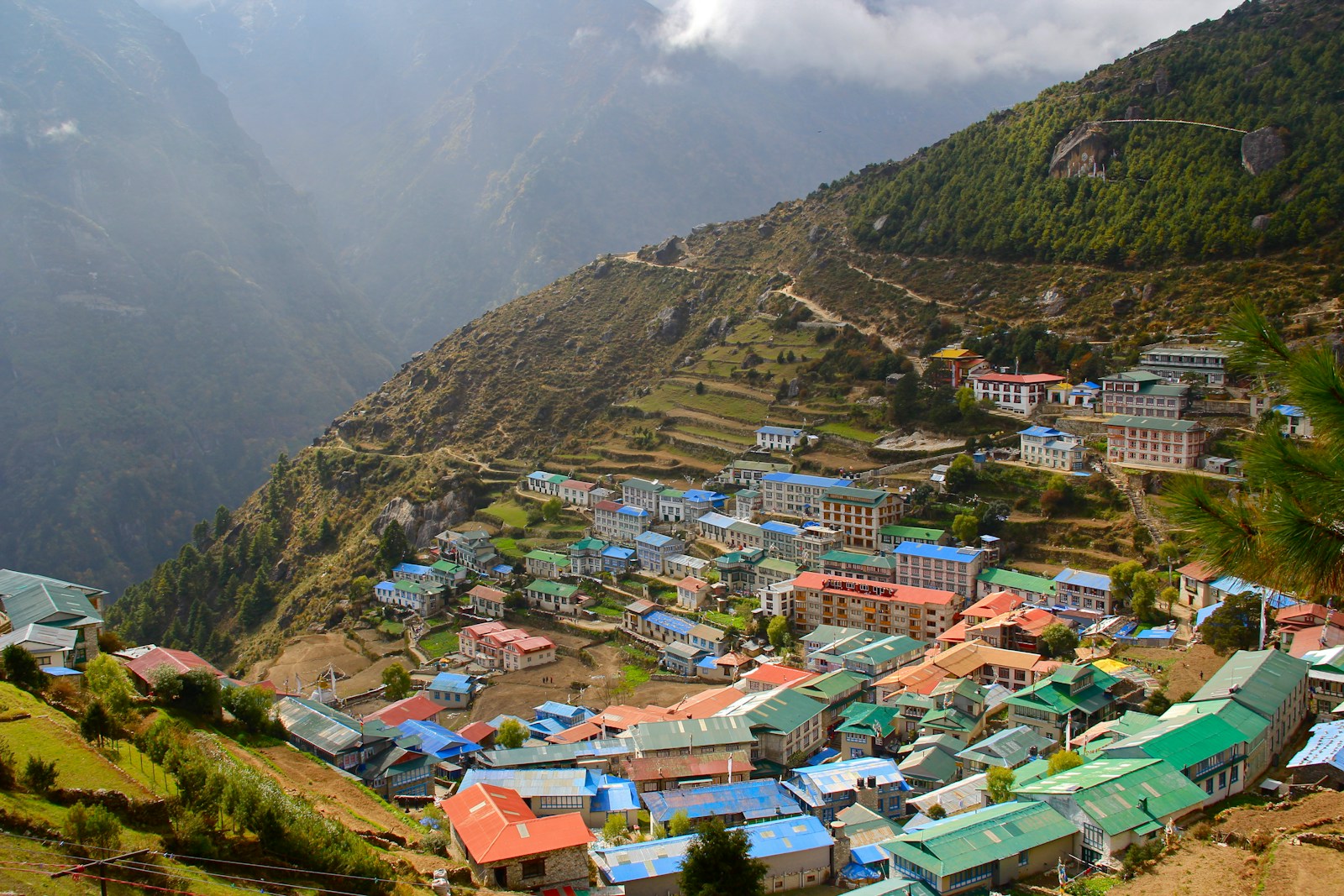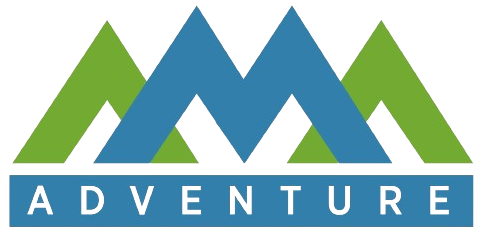
8 Places You Shouldn’t Miss On Your Lower Mustang Trip
Posted on: Monday, January 20th, 2025.Lower Mustang is on the base of the fabulous Upper Mustang and the classic Annapurna Circuit but deserves more attention as a destination on its own. Spending four days to a week here will allow you to undertake some beautiful day hikes, witness the incredible dry landscape, and experience the Tibetan Buddhist culture of the local Gurung people.
Lower Mustang is a very windswept, dry region of Nepal that lies in the rain shadow of the Himalayas. If you want to experience some of the most incredible landscapes in Nepal and enjoy challenging hikes, bike trips, and road trips without the strain of a multi-day trek, then several days are spent around Jomsom and Kagbeni are an ideal choice.
The wind in Mustang is very strong and picks up from 11 am. You have to be aware of that in your journey. In the winter seasons, it can be even more bitterly cold. It is best to plan your days accordingly, to avoid the afternoon winds, and set out as early as possible.
And even though the Lower Mustang is known for its remarkable places and monasteries, it is more than just a place. It is a space to experience the connection with nature and feel the hospitality of the locals that makes your trip worthwhile. Do visit these places on your journey to Lower Mustang to experience that connection.
While you are traveling to Lower Mustang there are incredible places you must add to your list. There are some things that you must also do on your trip. They are:
1.Tatopani – places to deep your ired Leg
2. Marpha – Capital of Apple
3. Tukuche – Biggest Thakali village
4. Jomsom – Administrative Town of Lower Mustang
5. Kagbeni – Entry point of Last forbidden Upper Mustang
6.Muktinath – A Space of spritual Liberation
7. Tiri Village –
8. Lubra Village –
Tatopani – places to deep your Tired Leg
Tatopani is the center attraction of the Lower Mustang region that also has medicinal values. foreigners as well as Nepalese visit here to relieve multiple joint problems and skin disease. Hot spring exists as an important heritage for Nepalese as well as foreigners. Bikers and cyclists enjoy soaking their tired legs in hot springs after long treks. In this spring, there is a large amount of black salt and phosphorus, which acts as a natural antibiotic. Because of this, the diseases are not transferable from one person to another while sharing the hot spring. People who suffer from gastric, rheumatism, uric acid, backache, skin diseases, slowing, goiter, and arthritis come to take bath to be cured. Make sure you stop by this hot spring on your way to Lower Mustang. Tatopani gets busy during the months from January to March and the rest of the months are occupied with fewer people.
Marpha – Capital of Apple Farm
Marpha is an apple and apricot orchard-surrounded village. The best way to appreciate the scale of the mountains and see the different landscapes of the Kali Gandaki valley is to hike along the Kali Gandaki river from the top to the endpoint of the hike. The best half-day excursion from Jomsom is to visit Marpha village (8,759ft/2,670m), which is located on the south of Jomsom. Walk along the main road for 90 minutes. On the road to Marpha and along the Kali Gandaki river, you can see the path to Marpha. Marpha is a beautiful, clean town surrounded by canals and irrigated orchards. A return hike to Marpha from Jomsom takes three hours, without including time to stop. But you could take some time to stop in Marpha for snacks (must try freshly made apple pie) or the town’s famous cider. Marpha signs point the way up to Dhaulagiri base camp and there are several lodges in Marpha, so this is an alternative place to Jomsom Lower Mustang.
Tukuche – Biggest Thakali village
Tukuche is a place where travelers can find mixed traditions. It is the Largest Thakali village offering an interesting view of the rural part of the Himalayas. Visitors can also have a spectacular view of the Tukuche peak in front of Dhaulagiri first and the Annapurna range. The beginning of the Tukuche is not as beautiful as the center, but there are interesting large stores of wood for the winter on the roofs of houses. Tukuche is a beautiful village with completely different architecture than anywhere else in Nepal. There are beautiful white plasters and wooden balconies. Tukuche is the next village along the Muktinath tour that takes only two hours from Marpha village. Usually, people stop at Marpha, then pass through Tukuche village. Before the construction of the road started, Tukuche used to be bustling during the peak season. While you are traveling in Lower Mustang you should make extra time to explore the Tukuche village and taste their local apple brandy. Aside from the apple farm, you can explore the apple cider production center and the beautiful Buddhist Monastery. You should add it to your overnight list while you are on a travel journey to Muktinath.
Jomsom – Administrative Town of Lower Mustang
Jomsom is the gateway to Lower Mustang and is a one-street town with lots of lodges, ranges. Nestled below the soaring Nilgiri and Dhaulagiri mountains, Jomsom is a beautiful town in Mustang. The administrative town of Lower Mustang used to be Thini. Thang Min Chen established a fort for surveillance of people’s movement along the trade route to Tibet. Once a bustling trade route and a transit for Hindu and Buddhist pilgrims to Muktinath, Jomsom is now popular among trekkers. Jomsom is also known as a gateway to the forbidden kingdom of Lomanthang in upper Mustang. Mesmerizing natural beauty, alpine desert-like landscape, exotic Thakali, Magar, Tibetan, and a mix of Hindu and Buddhist culture attract thousands of footfalls every year. The brown is part of the Annapurna and Annapurna foothill trek also connect with offbeat path trails including the Dhaulagiri circuit and upper Dolpo. This desert town located at the altitudes of 2,740m above sea level at the Annapurna conservation area offers multiple attractions to be around this beautiful town.
You shouldn’t forget to explore the apple market, Mustang museum, Dhumba lake, leopard cave, rock climbing, Thakali cultural museum, Jomsom view tower, and Jomsom Modern Bakery.
Kagbeni – Entry point of Last forbidden Upper Mustang
Kagbeni is a junction between the Kaligandaki and Jhong streams. Found north of Jomsom, anon Nepali travelers can go similar to this town with Annapurna preservation Area Project ( ACAP) grant. You can either climb or take a rough vehicle ride; this town is additionally popular for apples. Keep pursuing to find out about apple shopping. Mud houses back streets, an exotic way of life of Thakalis makes this town one more unmissable objective of Mustang. Assuming your taste buds have gone numb with eating Dal Bhat in the mountains. If you are tired of the local Dalbhat, Kagbeni is the place to attempt a new Tibetan food line Tingo and other items. The Hindu people also perform the death ritual on the river (Tarpan) near Kagbeni in the name of their ancestors. When you are in Kagbeni, make time to explore the ancient Monastery, Tibetan style architecture house, and views of upper Mustang before heading towards the Muktinath Temple.
Muktinath – A Space of spritual Liberation
From Kagbeni, Muktinath (12,303/ 3,750m) is a five-hour round-trip hike. Muktinath Temple is a pilgrimage site for Hindus and Buddhists and is especially popular with Indian tourists. This is a bumpy road on a vehicle, so it’s best to follow the smaller tracks uphills on a hike, all the way to Muktinath. On the way, you’ll pass through the ancient town of Jharkot (3,550m,/11,646ft), from which Muktinath is the major attraction of the Lower Mustang. The temple is built in pagoda style. There is also a Buddhist stupa, that showcases the religious bonding of Nepal. You shouldn’t miss the hundred and eight holy taps, holy pond, eternal flame, and the Buddhist monastery. The devotees believe that worship and bathing under the tap and pond provide salvation after death. The eternal flame at the Muktinath burns by itself, by nature’s process continually. Muktinath is also the base of the Thorong- La pass. It offers amazing views of Mt. Dhaulagiri, Tukuche Peak, and the mysterious landscape of the upper Mustang side, and the incredible valley view. There are options to reach Muktinath- either a hike or also jeep service available from Kathmandu and Pokhara. It is not just a spiritual center, it is also a popular destination for mountain biking, trekking, and road trips.
Note: No one is allowed to take pictures of Lord Shiva’s statue inside the main shrine of Muktinath Temple.
Tiri village – Colorful Village
If you are spending extra days at Kagbeni you can spend the day hiking to the Tiri village. Tiri village is located north of Kagbeni and takes only 30-45 mins. You have to cross the bridge in Kagbeni, and then follow the side trail towards the green farmland. This place looks incredible during the autumn season with blooming buckwheat, and green Champa (Uwaa) on the other side. The road is very rocky so it is better to take a hike even when you are on your bike trip. The trail to Tiri village is very steep even though it is a short hike. Look around and find the monastery with mesmerizing Kali Gandaki river, snow-covered mountains, and also the upper Mustang side in a view distance. Along the way, notice the color theme of the Buddhist Chorten (a religious Buddhist monument) in Mustang – white, red, and blue-gray. These colors are distinctive of the area.
Lubra – Village of Bon Religion
Lubra is another popular place to visit in Lower Mustang. It is located between Jomsom and Kagbeni. The people who inhabited this village follow Bon village, considered as the last village in Lower Mustang where the pre- Buddhist religion is followed. Bon Monastery located above the Lubra village is considered the last Bon Monastery in Nepal. Lubra is the small village of Mustang where only 20 families live in entire villages. Travelers are keen to learn and research about the Bon religion Lubra is a great place to explore. You can easily take a short hike from Jomsom to get to know the unique traditional dotted wall around the town, such as the colorful string ‘devil traps’ that are put in their doorways to catch the devil at night. It is possible to spend the night or else pass through on the way between Kagbeni and Jomsom.
Best season to Visit Lower Mustang
The Spring (March to May) and the Autumn ( September to November) are considered the best season to explore Lower Mustang. This area falls in the rain shadow region, so even though it’s possible to visit all year round, based on my experiences you can escape the summer season from June to August.
If Mustang is a sought-after getaway destination, Lower Mustang forms the base of the experience, literally. Every place in Mustang is great to learn about Thakali culture and Tibetan people. This is why Lower Mustang is a destination of its own. There are places here in Lower Mustang that take you on a deeper journey than only in Mustang.
So, if you have more than four days on your Mustang trip, make sure to hit these places in Lower Mustang. While you are at it, you can also check out Upper Mustang which will only add an extra few days on your journey.

